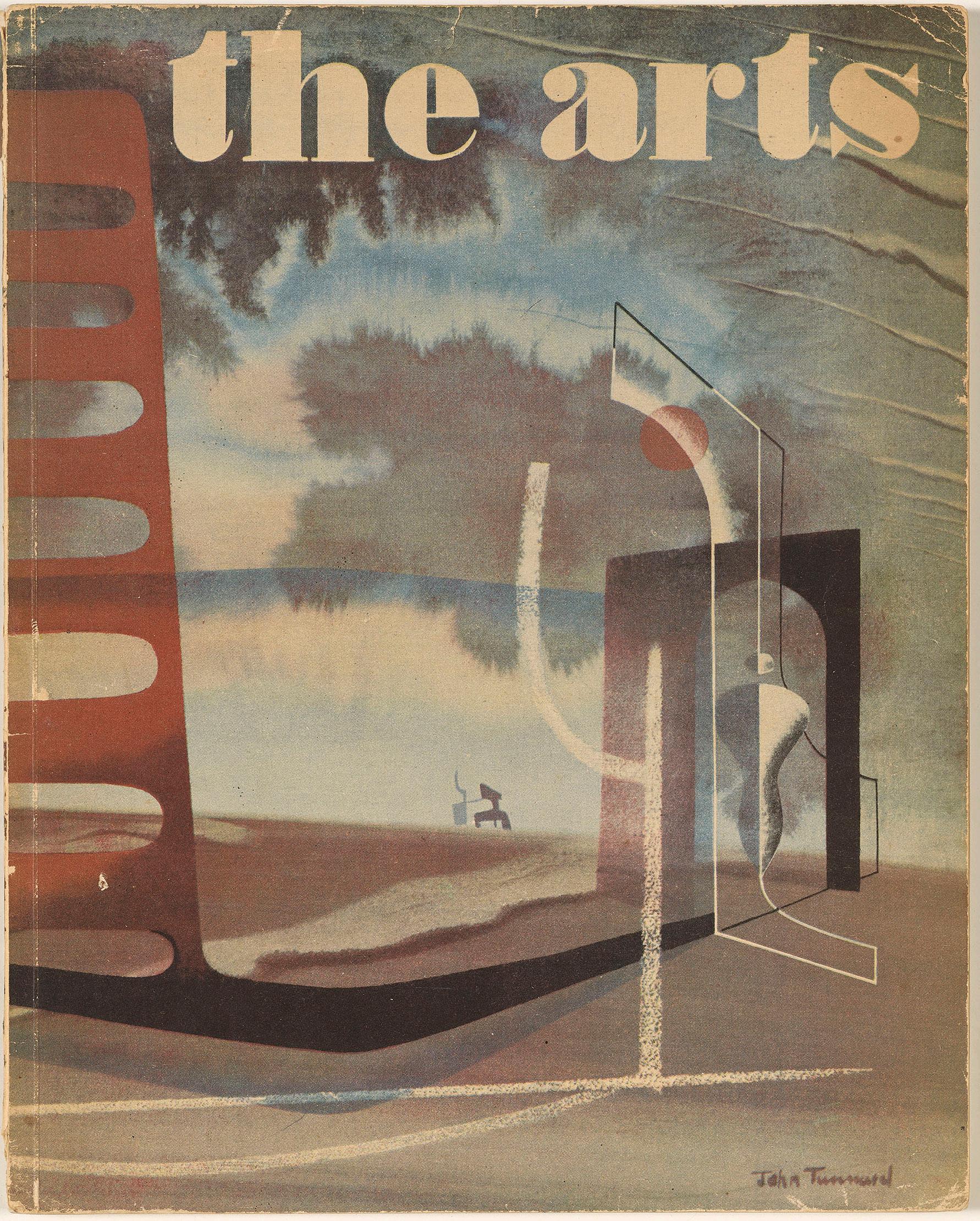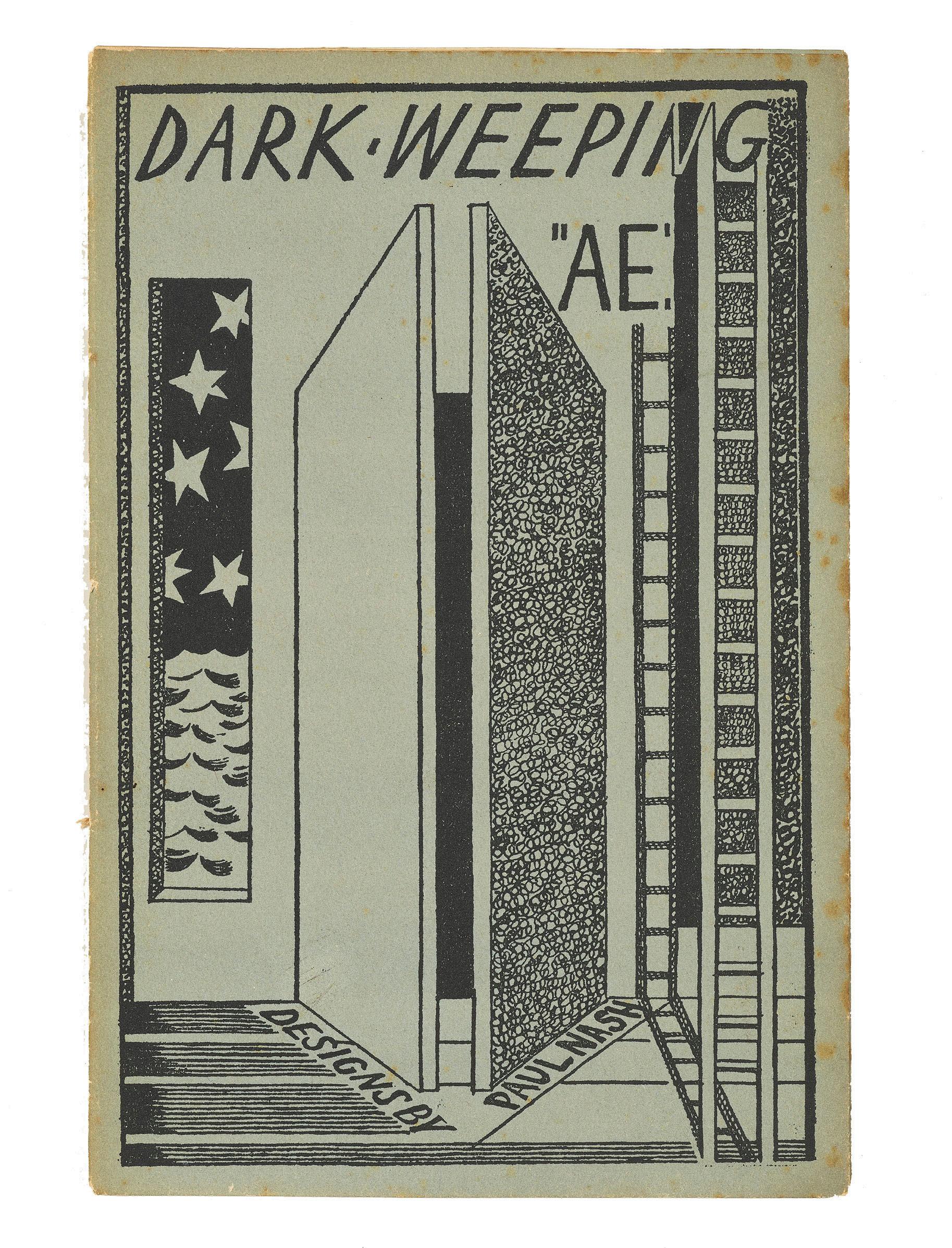
5 minute read
Modern Art
from PMC Notes
Modern Art & Publishing
Sarah Victoria Turner, Deputy Director for Research, writes about a new display of modernist British art periodicals and books, on public view in the Drawing Room at the Paul Mellon Centre until 17 January 2020.

Juxtapositions can halt us in our tracks. When placed in close proximity, images or words that were once strangers perform a kind of alchemical transformation. The result is often to make us look at, or think about, them again or somehow differently. In the eighth and final issue of the journal Axis, published in the winter of 1937, an eighteenth-century engraving of Silbury Hill in Wiltshire by the antiquarian William Stukeley, an aerial photograph of the same site taken sometime in the 1930s by the archaeologist O. G. S. Crawford, and an abstract painting by the Catalan painter Joan Miró sit together on a double-page spread. It is a visually arresting combination, bringing together ancient and modern, monochrome and colour, working across media and geographies. The aerial views of the bulbous mounds of Wiltshire’s earthworks magically become abstract forms when sat next to Miró’s painted shapes. The bright blues, reds, and whites of the painting pop even more dramatically from the page when combined with the subtle variations of the photograph and engraving.
This combination of images was put together by the artist John Piper to illustrate his article ‘Prehistory from the Air’. For Piper, the act of flying rendered the landscape abstract: ‘Flying (whether we do it ourselves or not)’, reads the first sentence of the article, ‘has changed our sense of space and forms and vistas enormously. From the air, hills flatten out and towns are seen at a glance in the sense or nonsense of their planning.’ The article meditates on the way new technologies of travel, such as flight, had radically altered the perception of space and the way in which ancient forms were being perceived. This fascination was fuelled by the work of Crawford, a friend of Piper, and these images allowed Piper to see landscape afresh. The ancient became new and the new became ancient. This aerial view flattened the landscape but also removed the horizon line, and the vanishing point vanished. These new views were liberating, but also foreboding. Photographs of aerial reconnaissance and bombardment were prevalent in 1937 when German planes flew over Guernica and dropped bombs with such devastating effect, so Piper was well aware of the destructive potential of flying as well as its possibilities.

In the late 1930s, the axes of art, politics, and society were shifting dramatically. These conflicts, this sense of awe, this tension are what make this double-page spread so beguiling. Axis, the periodical that published Piper’s article, is full of such surprising combinations, presumably orchestrated by its editor Myfanwy Evans. The issues of Axis published in a short but intense period between 1935 and 1937, although slim, are rich in their variety of content, bringing together contemporary art and ideas by British and European artists and writers. This magazine will feature in the new display in our drawing room in Bedford Square this autumn and winter (23 September 2019 – 17 January 2020), which brings together highlights from the Peter & Renate Nahum Gift, a very large collection of books and periodicals donated to the Centre in December 2012. This was transformative for the Centre’s library collection, considerably enhancing our holdings on twentieth-century British art. The donation comprises thousands of books, exhibition catalogues, and journals. The display, Modern Art and Publishing between 1935 and 1955: The Peter & Renate Nahum Gift, focuses on publications from the collection which were crucial to circulating knowledge and ideas about modern art in Britain from the 1930s through to the 1950s.

On display are some of the most significant modernist periodicals and publications of this period – Unit One, Axis, and The London Bulletin. These publications did not go about their work quietly, but often used surprising and striking combinations of typography, images, and colour to make their intended audiences take notice. They volubly championed the work of contemporary British artists such as Barbara Hepworth, Paul Nash, and Henry Moore, but also reproduced images by artists from across the globe. Through the publications, we can track how groups of artists, critics, writers, publishers, and booksellers worked collaboratively, and often against the grain, to promote contemporary art in Britain. Each display case focuses on one of the three publications named above and a selection of the artists and writers most closely associated with them. The bookshops and galleries where these publications were sold were often at the centre of the modern movement in Britain, places for new ideas to meet. The publications on display capture the frisson and excitement of this change in the contemporary art scene and the selfconscious development of constellations of artists and writers who allied themselves with modernism, but there are also traces of the seismic shifts happening in the wider world. A call to action, ‘Fight Hitler We Must’, sits at the front of the June 1940 issue of The London Bulletin. This sense of change, for better or worse, is palpable within these pages. The effects of war are also apparent in the physical production of publications from this period, when editors and publishers had to cope with paper rationing and the rising costs of printing.
The pamphlet that accompanies the display contains an interview with Peter Nahum, focusing on the intersections between art and book collecting. Peter and Renate Nahum ran a gallery in St James’s for twentyfive years, and before becoming a dealer, Peter Nahum was head of the Victorian and Modern British departments at Sotheby’s. A symposium accompanying the display will take place at the Centre on Tuesday, 3 December 2019.




